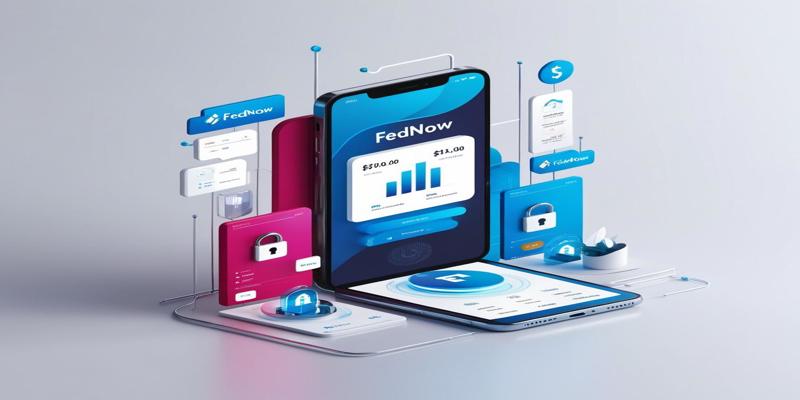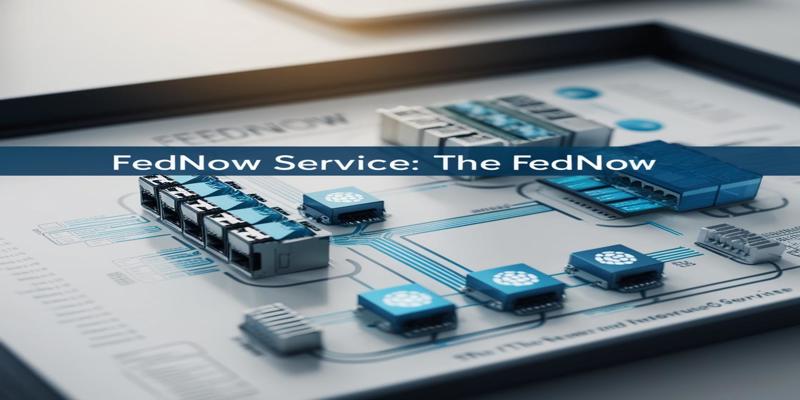Fed Seek Fintechs to Promote FedNow Uptake
Dec 11, 2024 By Susan Kelly
When the Federal Reserve unveiled the FedNow service in July 2023, it marked a sea change in how the US payment systems function. Designed to enable real-time payments, FedNow was intended to bring modernity into the American financial space, enabling instantaneous transactions between different financial institutions. As we near the second anniversary of its launch, the Federal Reserve is looking increasingly toward fintech companies to advance the adoption and integration of this innovative payment platform. This article explores what FedNow means for fintechs, the current adoption status, challenges, and opportunities.
What is FedNow?

FedNow is a real-time payment service the Federal Reserve provides and authorizes instant fund transfers between participating financial institutions. Whereas many of today's traditional payment systems, such as the Automated Clearing House (ACH), require one to two business days to process a transaction, FedNow operates 24/7/365 and instantly provides the end-user access to their funds. This capability is handy to businesses and consumers who rely on timely transaction processing across payroll, bill payments, and peer-to-peer transfers.
Key Features of FedNow
- Real-time transactions: Transaction processing within seconds.
- 24/7: Any time, anywhere, without any delay.
- Enhanced security: Integrate fraud deterrents within the system.
- Interoperability: Support of different messaging standards, like ISO 20022, provides interoperability with international systems.
Current Adoption Landscape
At the midpoint 2024, FedNow had almost 900 financial institutions using it since the service was rolled out. This includes significant banking institutions such as Chase and Wells Fargo, plus several community banks and credit unions across all 50 states. The Federal Reserve is looking to connect about 8,000 of the 10,000 banks and credit unions in the United States, which shows how significant a push there is for wide adoption12.
Growth Trends
Recent studies show that consumers' interest in instant payments is rapidly increasing. As of 2023 alone, 86% of businesses and 74% of consumers used faster ways of making payments. Problems persist, though, because some significant banks have not aligned FedNow with their service provisions, which may pose a problem for complete adoption.
The Role of Fintechs in Driving Adoption
Fintech companies can tap FedNow's capabilities to further the service potential. Integrating real-time payment capabilities into their platforms could yield several benefits. Fintechs can thus offer consumers faster and more efficient transaction options. The benefits can include:
Enhanced Consumer Experience
- Instant Payments: It would be possible to deliver funds immediately, further enhancing user satisfaction.
- Lower Costs: With the FedNow infrastructure, fintech companies can lower transaction fees compared to traditional payment methods.
- Innovative Solutions: Real-time payment processing creates avenues for new business models and services.
Competitive Advantage
In using FedNow, fintechs will have an avenue through which they can deliver differentiated value propositions in terms of speed and convenience relative to incumbent banks. This competitive differentiator is essential in a marketplace filled by the growing number of financial institutions whose consumer base increasingly favors digital platforms with core efficiency and user experience competencies.
Collaboration Opportunities
In a nutshell, the Federal Reserve's focus on fintech creates an opportunity for collaboration among traditional banks and fintech firms and for them to develop integrated solutions that enhance customer offerings while expanding FedNow's reach.
Challenges Facing Adoption

Despite numerous benefits, several challenges must be surmounted to maximize FedNow's full effect:
Transaction Limits
Currently, FedNow imposes a transaction limit of $500,000. This can be unsatisfactory for large businesses requiring higher limits than that. This limitation will negatively affect a few corporate customers who may opt out of the service34.
Interoperability Issues
While FedNow strives to be inclusive, the lack of interoperability with other real-time settlement systems like The Clearing House's RTP network presents an issue. Smooth operability within these channels is necessary for wider applicability within the financial system.
Fraud Prevention Concerns
Like with any form of payment system, security must be paramount. The fintech has to design strong fraud prevention measures during the integration of FedNow into its offering to protect users from the risks associated with real-time transactions4.
Future Outlook for FedNow and Fintechs
The future of FedNow is bright, with adoption growing from both financial institutions and consumers. The Federal Reserve has committed to making the system more attractive for corporate customers so that further changes will occur.
Expanding Use Cases
FedNow is already being used for several applications, including:
- B2B Payments: Instant payments can change how business operates by giving access to money immediately.
- Digital Wallet Funding: In-wallet funding for users makes transactions frictionless.
- Insurance Disbursements: Timely insurance claim disbursements will help increase customer satisfaction and faith in the company.
Strategic Integration by Fintechs
Thus, fintech should focus on creating strategies that will better integrate FedNow into their product offerings and take advantage of the following opportunities:
- Enhancing user interfaces to make real-time payment options easily accessible.
- Expanding their service offerings through partnerships with banks and other financial institutions.
- Invest in technology supporting secure transactions while maintaining regulatory standards.
Conclusion
FedNow's release is a giant leap into modernizing the US payment landscape. With its instant processing capability, it has the potential to transform consumer and business payments alike, strategically positioning itself at the very fulcrum of the future of finance. As fintech companies adopt this innovative platform, they will be instrumental in driving the broader adoption across the financial ecosystem, not merely helping improve service offerings.
Resolving existing challenges and capitalizing on real-time payment opportunities means that fintech will again lead from the front as instant payments become standard practice.








